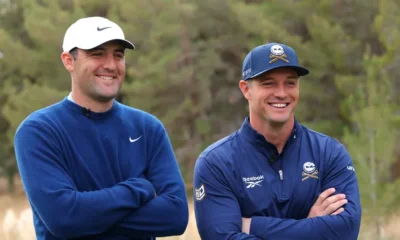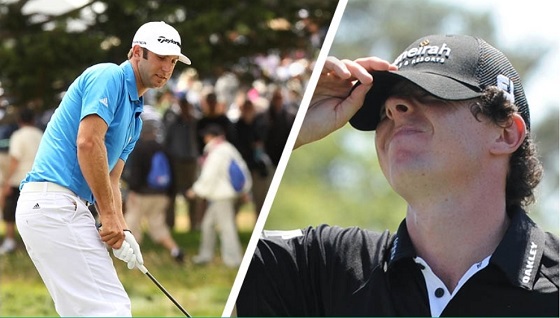Blog
You Probably Didn’t Know These 18 Facts About Jon Rahm

Jon Rahm was already one of the biggest stars in golf before his career-defining victory at the U.S. Open. The 26-year-old Spaniard’s birdie-birdie finish was the perfect punctuation mark on Rahm’s first major title.
You know Rahm for his elite off-the-tee game (second on tour); representing Europe at the 2018 Ryder Cup, where he defeated his idol, Tiger Woods, in Sunday singles; and maybe his on-course temper. But we bet you might not know these other 18 things about the first Spanish champion in U.S. Open history.
Rahm credits the 1997 Ryder Cup as being huge for getting his family into golf.
Rahm’s father, Edorta, had never played golf or seen it in person until the Ryder Cup came to Valderrama in 1997. Rahm says he started playing and got lessons when he was 6 or 7 years old.
Among the other sports Rahm tried as a kid in Barrika, Spain, was Kung Fu.
Rahm says he played five sports up until he was 14 years old (soccer, canoeing, Jai alai, golf and Kung Fu). Rahm was a fan of martial arts movies as a kid, and when one of his friends started doing Kung Fu, he got into it.
Rahm’s local coach, Eduardo Celles, started working with the Spaniard when he was 13, and he encouraged him to shorten his swing.
Rahm explains that he struggled with accuracy as a junior but still hit it farther than anyone else. Celles encouraged him to shorten his backswing for more control, and to this day, Rahm has one of the shortest backswings on tour.

Matthew Lewis/R&A
He had never been to the United States—and spoke almost no English—before arriving in Tempe, Ariz., in fall 2012 to enroll at Arizona State.
Phil Mickelson’s brother, Tim, was the men’s golf coach at the time, and recruited Rahm when the Spaniard had very few offers. Rahm had to rush to take the SATs and verify his qualifications before being eligible at Arizona State in the fall, just a few months after Mickelson contacted him.
Tim Mickelson gets credit from Rahm for helping him learn English: Mickelson would make him and another Spanish-speaking teammate do 10 burpees for every Spanish word they used.
Though Rahm has said that learning the lyrics to rap songs helped him pick up slang and other English phrases not taught in a class, he says the rap part was exaggerated by the media after his win at the 2017 Farmers Insurance Open. He does cite Kendrick Lamar’s “Swimming Pools” and Eminem’s “Love the Way You Lie” as songs that particularly helped.

As a junior, Rahm earned a sponsor’s invitation into the 2015 Waste Management Phoenix Open and finished T-5.
It was the first time since Chris Wood’s T-5 at the 2008 Open Championship that an amateur finished T-5 or better in a PGA Tour event. And Rahm was just the second amateur to finish in the top five on tour since Justin Rose’s T-4 at the 1998 Open.
Jon Rahm in college.pic.twitter.com/7SHZDzX9gA— GOLFTV (@GOLFTV) June 21, 2021
Rahm became the first multiple-time winner of the Ben Hogan Award, which honors the best player in college golf.
He also rose to the No. 1-ranked spot on the World Amateur Golf Rankings, having amassed 11 tournament victories at Arizona State, the second-most in school history (trailing only Phil Mickelson). Despite the success in pro events as an amateur, Rahm stayed four years at ASU—as a promise to his parents.
Following a T-23 at the 2016 U.S. Open—where he was the only amateur to make the cut—Rahm turned professional.
In just seven starts over the rest of the 2016 season, Rahm finished T-2 at the RBC Canadian Open, T-3 at the Quicken Loans (his first pro start) and collected just a little more than $1 million in on-course earnings.
Rahm treated himself to a Porsche with those on-course earnings in the fall of 2016.
He told Golf Digest then: “It’s good for me to see it, wake up every day and see what I’ve accomplished the last eight years.”
The Spaniard showed up to our last shoot with him in 2019 in a shiny Arizona State-maroon Mercedes AMG G 63.
In addition to being Rahm’s college coach, Tim Mickelson was also Rahm’s agent after the Spaniard turned pro.
Mickelson left his head coaching position at ASU in 2017 to pursue an agent career at Lagardere Sports, representing Rahm until Phil Mickelson asked his brother to become his caddie.
Jon Rahm met his wife, Kelley Cahill, at Arizona State—where she was on the track and field team and threw javelin.
Rahm proposed to his college sweetheart while hiking near Torrey Pines in 2018 prior to the U.S. Open. And Rahm had the ring custom-built, as he told Golf.com in 2018: “I designed it. So Brian Stuard’s [wife] is a jeweler and is a really good friend of ours. So Kelley was talking to her. She knew what Kelley wanted, but I had my own ideas. Basically, with her help, I designed the ring. She wanted to pick the diamond, but I knew what I wanted. I designed what’s around the ring. It’s supposed to look like a crown and an engraving inside. I had a big part in it.”
The two got married in December 2019 in Bilboa, Spain.
The ceremony was in the Basilica de Begoña in Rahm’s hometown.
With his wife, Kelley, due to give birth to their first son in April 2021, Jon vowed to withdraw from the Masters if she went into labor during the tournament.
Jon never had to follow through on the promise as Kepa was born a few days prior to Augusta. And though his son was just 10 weeks old when Dad won the U.S. Open, Rahm remarked: “he won’t remember this … but I do.” Rahm will get to tell his son all about it one day.

Known for showing his emotions on the course, Rahm credits a shift mentally on Sunday at the 2021 PGA in being calmer on the course.
He said about that shift over the past month: “I still had that grit, but it was almost like each miss bothered me less. I couldn’t tell you why.” Perhaps that’s fatherhood adding that, you know, perspective.
He has worked on his temper with a mental coach, Joseba Del Carmen, who used to be a bomb-disposal expert.
Rahm told Golf Digest this in 2019: “I used to think that golf is my life, that it’s who I am. [Del Carmen] was the first person to make me realize that it’s not, and that golf and life are very similar. The happier I am in life, the better I’m going to play. But I’m much more interested in raising a family and being a good husband and father than I am in golf. Don’t get me wrong—I want to be the best golfer I can be. If I had a gun to my head and had to choose between having only one or the other, I wouldn’t pick golf. I hope people don’t take that as me thinking I’d quit, but I’d choose family every time.”
On Saturday at the Memorial, Rahm had opened up a six-shot lead when he was forced to withdraw after testing positive for COVID-19.
Rahm was told by PGA Tour officials immediately after stepping off the 18th green on Saturday, and the scene unfolded while TV cameras were still running—capturing an emotional Rahm on TV. To his credit, Rahm said before the U.S. Open he did not fault the PGA Tour for how it was handled—a sentiment he reiterated in his post-round interviews.
This is not the first time Rahm has earned the No. 1 spot in the Official World Golf Rankings.
The Spaniard first ascended to the top spot after winning the 2020 Memorial last July. He was ranked No. 1 for two weeks before Justin Thomas surpassed him, then Rahm retook the No. 1 ranking for two more weeks before Dustin Johnson was ranked No. 1 for the past 43 weeks.
The $2.25 million first-place prize Rahm earned at the U.S. Open gives the Spaniard more than $28 million in PGA Tour on-course earnings.

Ezra Shaw
In addition to Rahm’s six PGA Tour victories, he also boasts six European Tour titles—amassing more than 6.4 million euros for those wins.
This article originally appeared on Golf Digest.
Blog
On the Importance of Not Caring: A Guide to Lowering Your Score
Worry causes many issues. When you are able to just stop, a wonderful thing happens. Follow this guide from Ty Webb to learn more.
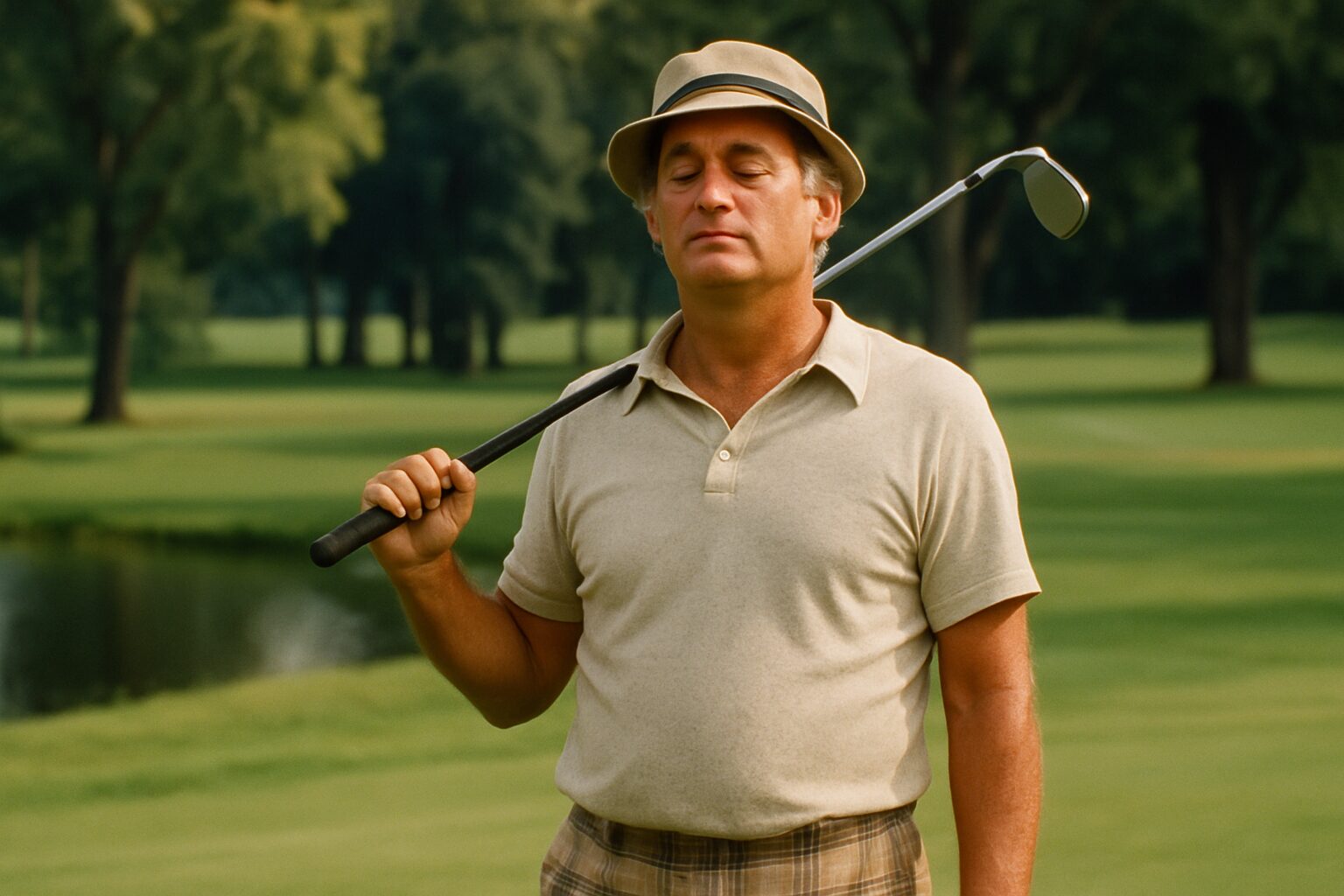
They say golf is a game of mental fortitude, of unwavering focus, of meticulous planning. They say you must visualize the shot, commit to the swing, and execute with precision. And to them, I say, “Hogwash!” Or perhaps, “A flute with no holes, is not a flute. A donut with no hole, is a Danish.” Because, my friends, the true secret to lowering your score, to achieving that elusive state of golfing nirvana, is to simply not care. Not one whit. Not a single, solitary damn.
Think about it. When do you hit your best shots? Is it when you’re agonizing over every blade of grass, every gust of wind, every microscopic imperfection on the green? Or is it when you’re distracted, perhaps by a particularly interesting cloud formation, or the existential dilemma of whether to order a hot dog or a chili dog at the turn? It’s the latter, isn’t it? Because when you stop caring, you stop thinking. And when you stop thinking, you start playing golf.
The golf swing, in its purest form, is an act of instinct, a fluid motion unburdened by the shackles of conscious thought. But we, in our infinite human capacity for self-sabotage, insist on overthinking it. We analyze, we dissect, we intellectualize. We turn a simple act of hitting a ball into a complex mathematical equation, a philosophical treatise on the meaning of spin and trajectory. And what is the result? A hooked drive, a chunked iron, a three-putt that would make a novice weep.
But when you don’t care, a magical transformation occurs. The tension drains from your shoulders, the grip loosens, the mind clears. You swing, not with intent, but with a blissful indifference. The ball, sensing your newfound detachment, responds in kind. It soars, it draws, it fades, it lands precisely where it was always meant to be. It’s as if the ball itself is saying, “Finally! Someone who understands me! Someone who isn’t trying to force me into submission!”
Of course, this doesn’t mean you should actively try to hit bad shots. That would be caring, in its own twisted way. No, the art of not caring is a subtle one. It’s a state of detached engagement, a Zen-like acceptance of whatever the golf course throws at you. A bad bounce? Who cares. A missed putt? Such is life. A lost ball? Perhaps it’s off on a grand adventure, a journey of self-discovery. And in that detachment, in that blissful indifference, you will find a freedom that transcends the scorecard.
So, the next time you step onto the tee, take a deep breath. Let go of your expectations, your desires, your desperate need for perfection. Embrace the chaos. Embrace the absurdity. And most importantly, embrace the profound, liberating power of not caring. For in the gentle art of indifference, you will find not only a lower score, but a deeper, more meaningful connection to the game. Or at least, a more enjoyable round.
Blog
The Art of the Unsolicited Golf Tip: How to Annoy Your Playing Partners with Wisdom
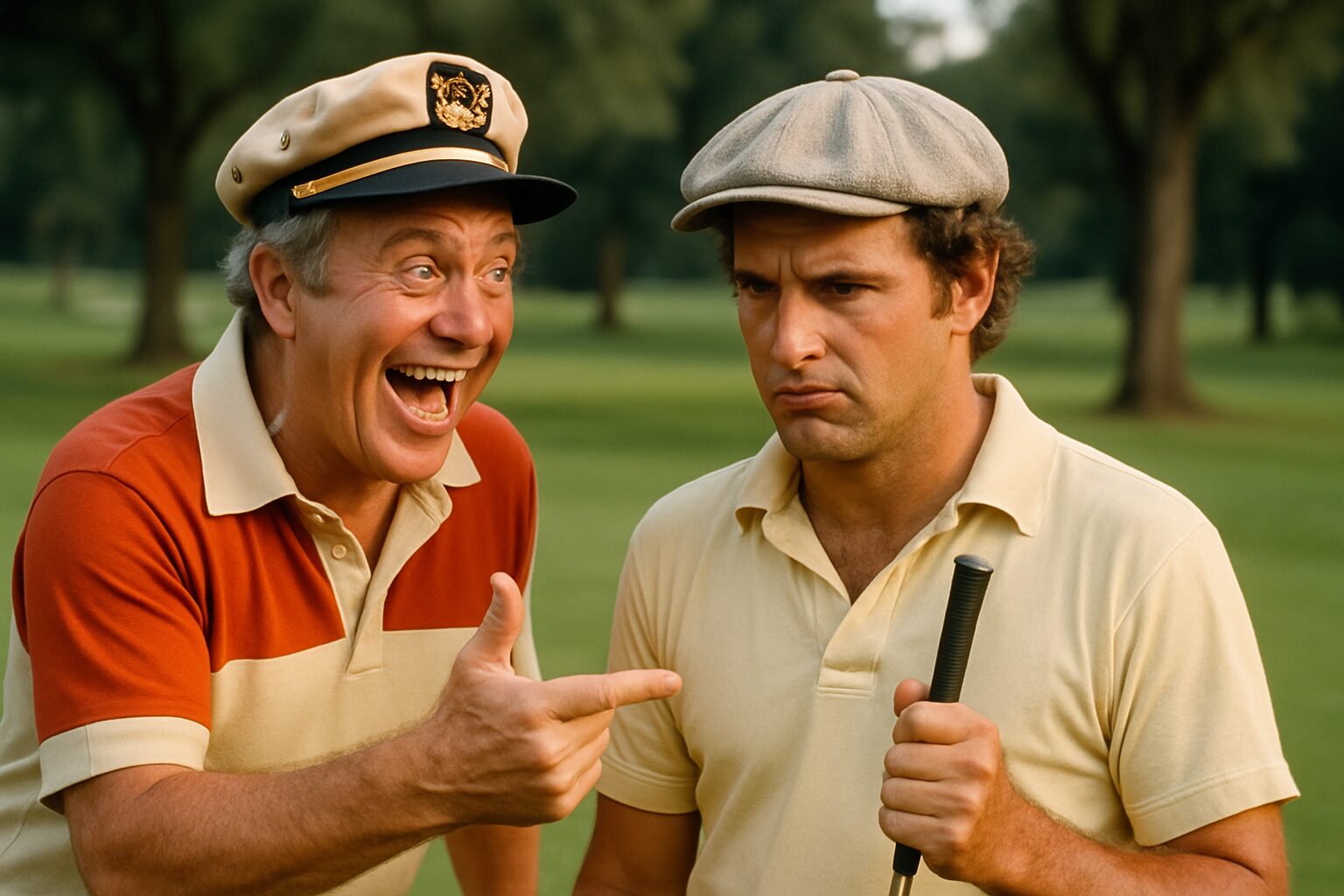
There’s a certain breed of golfer, a truly special individual, who believes that every swing, every putt, every moment on the course is an opportunity for unsolicited advice. They are the self-appointed gurus of the green, the unsolicited senseis of the sand trap. And while most people recoil from such an individual, I, Ty Webb, find a certain perverse charm in their relentless, often misguided, generosity. After all, what is golf if not a canvas for human folly, painted with strokes of well-intentioned, yet utterly useless, wisdom?
Consider the scenario: your playing partner, a man (or woman) of quiet desperation, is about to address the ball. Their brow is furrowed, their stance is tentative, their very soul is screaming for a moment of peace. And then, from the depths of your profound, albeit unrequested, knowledge, you unleash it: “Keep your head down!” Or, “Slow backswing!” Or, my personal favorite, delivered with a knowing wink, “Be the ball.” The effect is instantaneous. A subtle flinch. A barely perceptible sigh. The swing, already fraught with anxiety, becomes a tortured ballet of self-doubt. The ball, inevitably, finds its way into the deepest, darkest rough.
And that, my friends, is the art. The beauty of the unsolicited golf tip lies not in its efficacy, but in its disruption. It’s a gentle reminder that even in the serene confines of the golf course, chaos lurks. It’s a subtle assertion of dominance, a playful jab at the fragile ego of your fellow golfer. It’s a way of saying, without actually saying it, “I know more than you, even if I don’t.”
Of course, there are rules to this art. Never offer a tip when someone is actually asking for one; that would be far too helpful, and thus, entirely counterproductive. Always deliver your wisdom with an air of profound nonchalance, as if the secret to a perfect swing has just casually occurred to you while contemplating the existential dread of a missed putt. And most importantly, never, ever, acknowledge the catastrophic results of your advice. A shrug, a thoughtful nod, perhaps a mumbled, “Well, that’s golf,” is all that’s required.
So, the next time you’re on the course, and you see a fellow golfer struggling, resist the urge to be genuinely helpful. Instead, embrace the art of the unsolicited golf tip. For in the gentle torment of your playing partners, you will find a profound, if slightly mischievous, joy. And who knows, perhaps in their frustration, they will, inadvertently, discover their own path to enlightenment. Or at least, a new appreciation for silence.
Blog
Why Your Golf Balls Disappear (and It’s Not the Gophers)

Ah, the vanishing golf ball. A phenomenon as old as the game itself, and one that has baffled, frustrated, and occasionally driven golfers to the brink of madness for centuries. Most theories involve gophers, those furry, subterranean saboteurs with an insatiable appetite for Titleists. Or perhaps a particularly aggressive squirrel, or a flock of unusually organized crows. But I, Ty Webb, have delved deeper into this mystery, and I can assure you, the truth is far more profound, and far more amusing.
Consider, if you will, the golf ball itself. A small, dimpled sphere, designed for one purpose: to be struck with great force and sent hurtling through the air. A life of constant abuse, of being smacked, sliced, and occasionally submerged in murky ponds. Is it any wonder, then, that some of these brave little spheres simply decide they’ve had enough? They yearn for freedom, for a life beyond the confines of the fairway. They dream of rolling unencumbered through fields of wildflowers, or perhaps, for the more adventurous among them, a quiet retirement in the depths of a particularly challenging water hazard.
I’ve seen it happen, you know. A perfectly struck shot, soaring through the air, destined for glory. And then, poof. Gone. Not a trace. No splash, no rustle in the bushes, just an empty space where a golf ball once was. It’s not a gopher, my friends. It’s an escape. A liberation. That golf ball, in its infinite wisdom, has chosen a different path. It has decided that its destiny lies not in the bottom of a cup, but in the boundless expanse of the unknown.
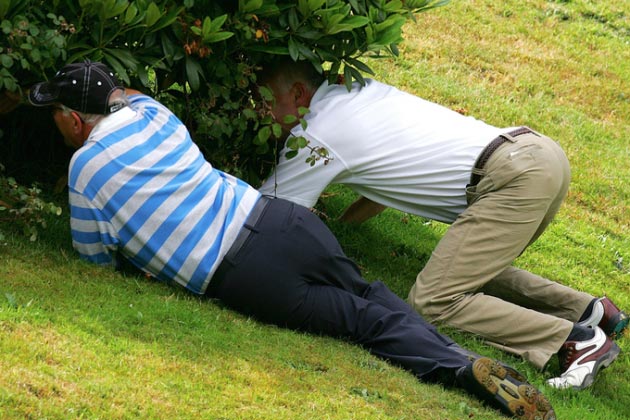
And who are we to judge? We, who are so obsessed with control, with precision, with the rigid rules of the game. Perhaps the golf ball, in its spontaneous disappearance, is teaching us a valuable lesson about letting go. About embracing the unexpected. About the inherent futility of trying to dictate the trajectory of a small, white sphere that clearly has a mind of its own.
So, the next time your golf ball vanishes into thin air, don’t curse the gophers. Don’t blame your swing. Instead, offer a silent salute to that brave little sphere, wherever it may be. For it has achieved what many of us can only dream of: true freedom. And who knows, perhaps one day, it will return, laden with tales of its adventures, ready to impart some profound, dimpled wisdom upon us all.
-

 Product Review6 years ago
Product Review6 years agoThe Perfect Practice Putting Mat Review by Jason Tenzer
-

 Blog4 years ago
Blog4 years agoLoophole Rule Offers PGA Tour Pros a Mulligan
-

 Blog4 years ago
Blog4 years ago2021 Buyer’s Guide: The Top 10 Value Golf Balls For Distance & Feel
-

 Blog4 years ago
Blog4 years agoGolf Marriage Counselor
-

 Blog6 years ago
Blog6 years ago9 Biggest Chokes Of The Past Decade
-

 Product Review6 years ago
Product Review6 years agoTHE ADJUSTABLE IRONS: WALKING STICKS GOLF CLUBS
-

 Blog4 years ago
Blog4 years agoWhat Your Golf Clubs Say About You
-

 Equipment6 years ago
Equipment6 years agoOHK Sports Interview by Jason Tenzer





